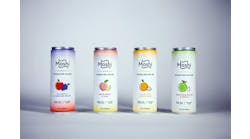Consumer demand for sustainable food and drinks continues to grow, and companies are increasing the supply. Mintel Global New Products Database (GNPD) tracked more than 13,000 new sustainable food and drink products since 2005.
While 84 percent of consumers say they regularly buy green or sustainable food and drinks, some are unaware of what the claims actually mean. "Packaging claims such as ‘recyclable' or ‘eco- or environmentally friendly' are fairly well known to consumers, but sustainable product claims such as ‘solar/wind energy usage' or ‘Fair Trade' have yet to enter the mainstream consumer consciousness," said David Browne, senior analyst. Of those surveyed, 40 percent have never heard of the solar/wind energy usage claim. The 37 percent that have say they've never purchased food or drinks bearing the claim. Reduced carbon footprint/emissions is another lesser-known claim, as 32 percent have never heard of it. Thirty-four percent say they've never heard of the Fair Trade claim.
According to Mintel, 45 percent of sustainable food and drink users cite a perceived belief in superior quality as the reason behind their purchases. Meanwhile, 43 percent are concerned about environmental/human welfare and 42 percent say they're concerned with food safety.
"These reasons vary in importance across different demographics. What's most important to young adults may not be the primary deciding factor for affluent consumers," notes Browne. "Marketers should consider this in their claims closely; noting that health, welfare, and safety are important for nearly all consumers."
Cause Marketing and Corporate Philanthropy
Perfunctory cause marketing and checkbook charity is over; building causes and social purpose right into business models and corporate culture is integral to consumers and their expectations, according the Edelman goodpurpose 2010 study.
Key findings are: 63 percent of Americans expect brands to do something to support a good cause; the same percentage expect brands to donate a portion of their profits to support a good cause; and 68 percent have more trust in a brand that is ethically and socially responsible.
For four years in a row, U.S. consumers rank purpose as significantly more important than design/innovation or brand loyalty as a purchase trigger when quality and price are the same. In 2010, nearly half (47 percent) cited social purpose as the No. 1 deciding faction, 27 percent cite brand loyalty, and 26 percent cite design/innovation. And 79 percent of Americans think it is okay for brands to support good causes and make money at the same time.
Optimistic Marketing Outlook
A StrongMail survey in late November, conducted by Zoomerang, reflects the attitudes of 925 business leaders in regards to their planned marketing budgets, priorities and challenges for 2011. The data reveals an optimistic marketing outlook, with half of businesses planning to increase marketing budgets, and another 43 percent keeping them steady. And, for the second year in a row, email marketing and social media marketing remain the top targets for increased spend.
Survey highlights include: 93 percent of businesses plan to increase or maintain marketing spend in 2011; 41 percent cite lack of resources/staff as primary email marketing challenge in 2011; 41 percent data integration; 36 percent email deliverability; 52 percent cite increasing subscriber engagement as top 2011 email marketing initiative; 49 percent improving segmentation/targeting; 43 percent integrating email and social media; 65 percent plan to increase marketing budget for email; 57 percent for social media; 41 percent search and 71 percent of businesses plan to integrate email and social media in 2010.
According to the survey, half plan to increase their marketing budgets in 2011, and another 43 percent plan to maintain current levels. Only 7 percent of respondents plan to decrease marketing budgets, a significant improvement over the 11 percent reported in last year's survey. Despite budget increases, respondents indicated a lack of resources/staff to be the biggest email marketing challenge in 2011, representing a potential demand for outsourced marketing services. Integration with customer data and email deliverability rounded out the top three email marketing challenges for 2011.

